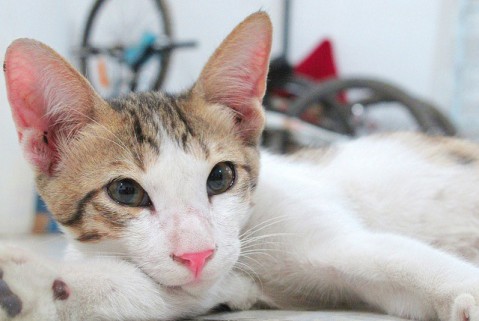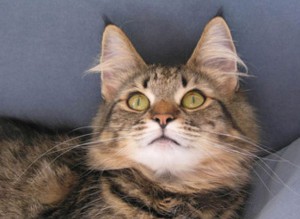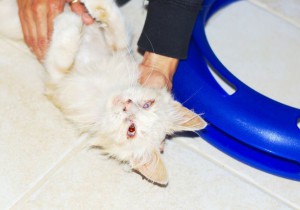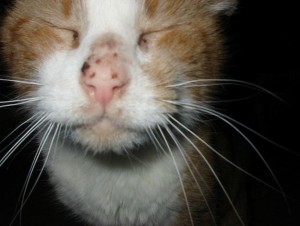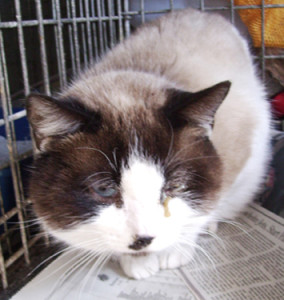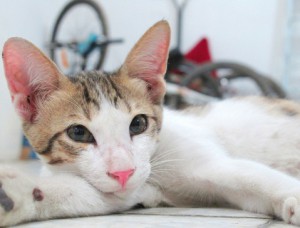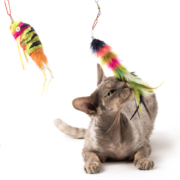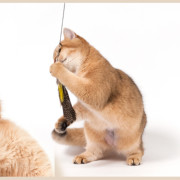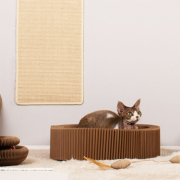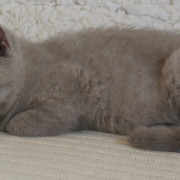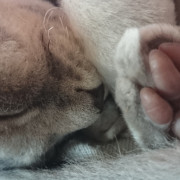Cat Ear Care: Problems and Solutions
Jordan Walker is an animal lover as well as a pet blogger in the Coops And Cages blog. And among his favorite pets are cats. Now, Jordan shares with us on how to solve the ear problems of our beloved pet cats.
Cats are known to be extremely independent pets. They can hunt down their own food and can clean themselves without their owner’s help. Cats don’t need baths too making it rather easier to keep them as pets. Nevertheless, cats need occasional cleaning especially in some parts of their body that they couldn’t reach—the ears!
Signs and symptoms of cat ear infection
Your pet cat’s ears are oftentimes meant to catch the sound of a scooting mouse. But these ears used for hunting its prey are also prone to ear problems including, fungal infection, mites, allergies, bacterial infection and even hematoma of the ear blood vessels. It is best to check for symptoms to detect any arising cat ear problems. Here are some signs and symptoms to watch out for:
• Dirty ears. A cat would not respond to its owner regardless of how many times they are called. However, this is not an indication of an ear problem. If a cat shakes its head for a noticeable number of times, pet owners should take this as a warning sign especially when it is accompanied by agitated scratching. An increased residue gathered inside the ears could also indicate cat ear problems. Oftentimes, a cat’s ears with problems could be reddish and feel warmer than usual.
• Parasites. A clear indication that a cat is experiencing ear issues is the presence of parasites. These are called ear mites found both in the inner and outer ears of the cat. Owners could check for these parasites by conducting an ear swab. This could be done by taking cotton and the right ear cleaner for swabbing. Be careful not to swab the inner portion of the ear as this could be very painful to the cat.
• Strong odor and discharges. Infected cat ears often have strong odor accompanied by discharges that resembles the appearance of ground coffee. This is a sign that ear mites are present in the cat’s ears. Black or yellow discharges from the ears also indicate infection.
Treatment and solution for cat ear problems
There are a lot of readily available treatment and solutions for cat ear problems. Some owners make use of household items to address the ear issues of their cats. Vinegar is known to be a good antiseptic and could be used to clean cat ears.
Take one part of vinegar and mix it with two parts of water to create a vinegar solution. This could be used to clean the dirt found in the outer ear and excess ear wax. Another effective cleaning agent is cooking oil. A few drops of oil for each of the cat’s ear could help lubricate and efficiently clean it. A vet could also prescribe a cleaning solution for the cat’s ears available in local drugstores and pet shops. Regular cleaning could help the cat’s ears to be protected from dirt and parasite infestation.
Aside from buying cat ear cleaning agents, home remedies could also be used to treat cat ear infections. Owners should bear in mind that cats do not like having their ears cleaned. That is why it would take a lot of patience to administer treatment at home. Here are other remedies that could help treat cat ear problems:
• Apple cider vinegar. This could be used as an anti-bacterial agent to clean the affected area of the cat’s ears. Simply dilute the apple cider vinegar with water to create the mixture. Use a clean cloth to rub the swollen area of the ears. Apart from cleaning the ears, apple cider vinegar is also effective in cleaning ear wounds.
• Products containing pyrethrins. This is a natural insecticide that could be bought from pet stores. Use a few drops and massage the ears of the cat and wipe off excess fluids. Directions are also indicated on its packaging, so be sure to follow it thoroughly.
• Miticide drops. Most pet stores have these drops that could be used to address parasite infestation. Pour a few drops into the cat’s ear canal and hold it for about half a minute to a minute.
• Yellow root extract. Some pet owners make use of yellow root extract as a supplementary aid to miticide drops. They administer the treatment every other day. However, the effects of this could not be immediately seen. Cats at home could be agitated from pesky itching and scratch their ears more until wounded.
• Ongoing treatment. Ear mites are spontaneous egg layers. In fact, they could lay eggs within four days. This means that cat ears infected with mites should have ongoing treatment until declared mite free. The process could last for several weeks. In case mites have traveled and infested the cat’s body, bathe it using flea treatment shampoos and let your cat rest in a clean mattress or bed.
• Treat other pets at home. Mites travel from one host to another. It is not surprising if other pets at home also have mites. One way to prevent the spread of parasite infestation is by treating other pets at home as well. Use the same treatment process to the other house pets as mites are highly communicable.
• House cleaning. Mites could be compared to fleas. They could also build temporary houses under the carpets and even in the house furniture. However, homeowners could address the mite problems of their pets by cleaning the house regularly as well as keeping the cat enclosure clean. Vacuuming could be a good start. This could eliminate the mite eggs from under the carpet. There are also feline safe products that could be used to keep the house free from mites.
Meanwhile, after treating cats with home remedies and if the condition still persists, it would be best to bring it to a vet. Injectable antibiotics are often prescribed once the infection has already reached the middle part of the ear. Antibiotics, anti-parasitic and anti-fungal drugs could also be prescribed for ear mite elimination. These drugs often come as ointments or drops.
A vet would administer the treatment by trimming the fur found around the ear canal of the cat. This would allow faster drying and cleaning of the ear canal. The vet could also prescribe medicines to help reduce the swelling ears of the cat. Pet owners could continue checking their cat’s ears to ensure that that their ears are clean and clear.
Prevention always works better than cure. To be able to keep pet cats from harmful ear mites, be to keep an eye on your pet even while associating with other pets during an outdoor walk. This would help to ensure their safety, away from fleas, mites and other hordes of threatening pests that might be present from other pets they meet.
Image Sources: [1] [2] [3] [4] [5] [6] [7]
Author: Jordan Walker

Jordan is the lead content curator for Coops And Cages as well as a couple of other pet related blogs. His passion for animals is only matched by his love for ‘attempting’ to play the guitar. If you would like to catch him, you can via Google+ or Twitter: @CoopsAndCages

